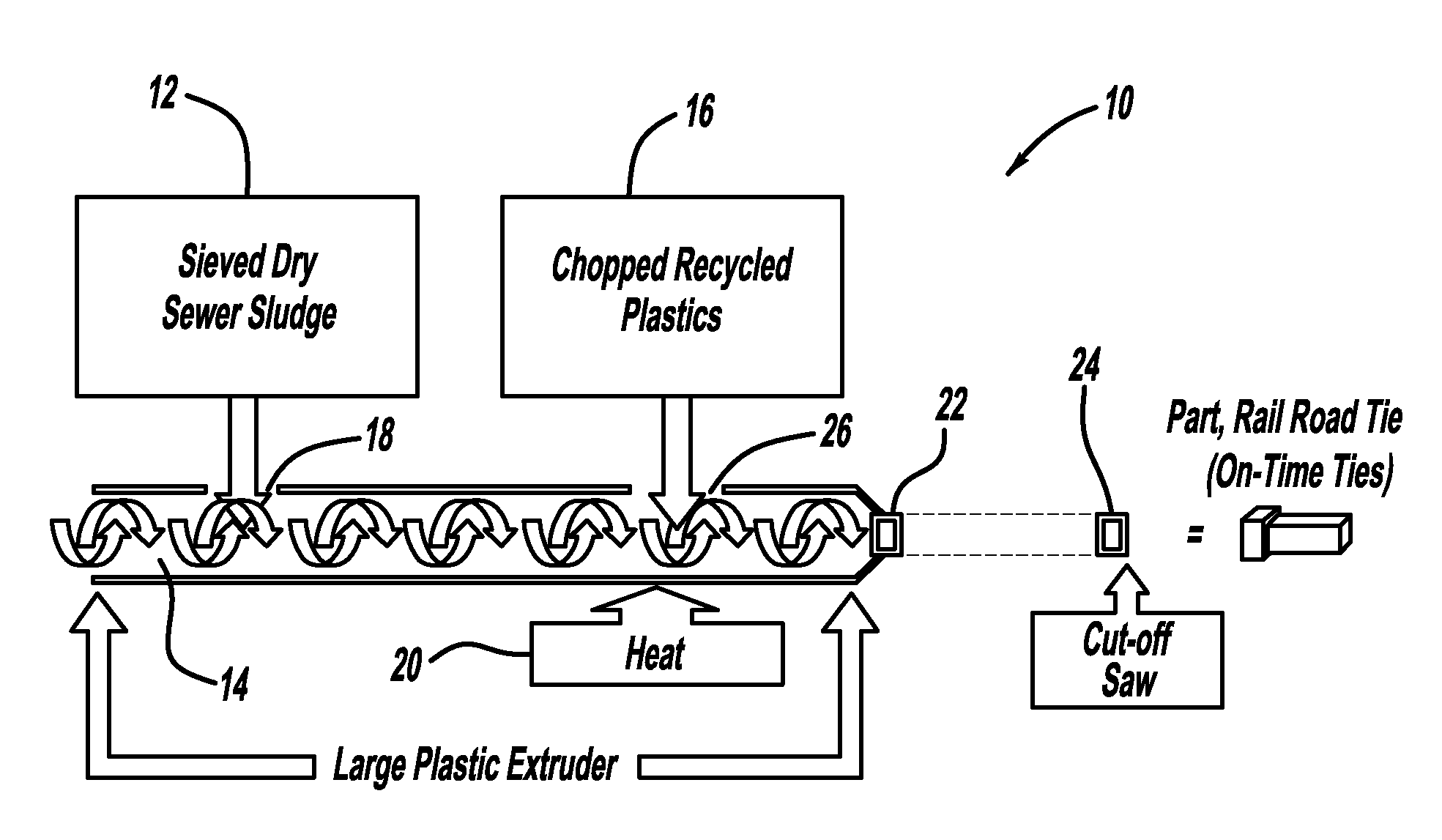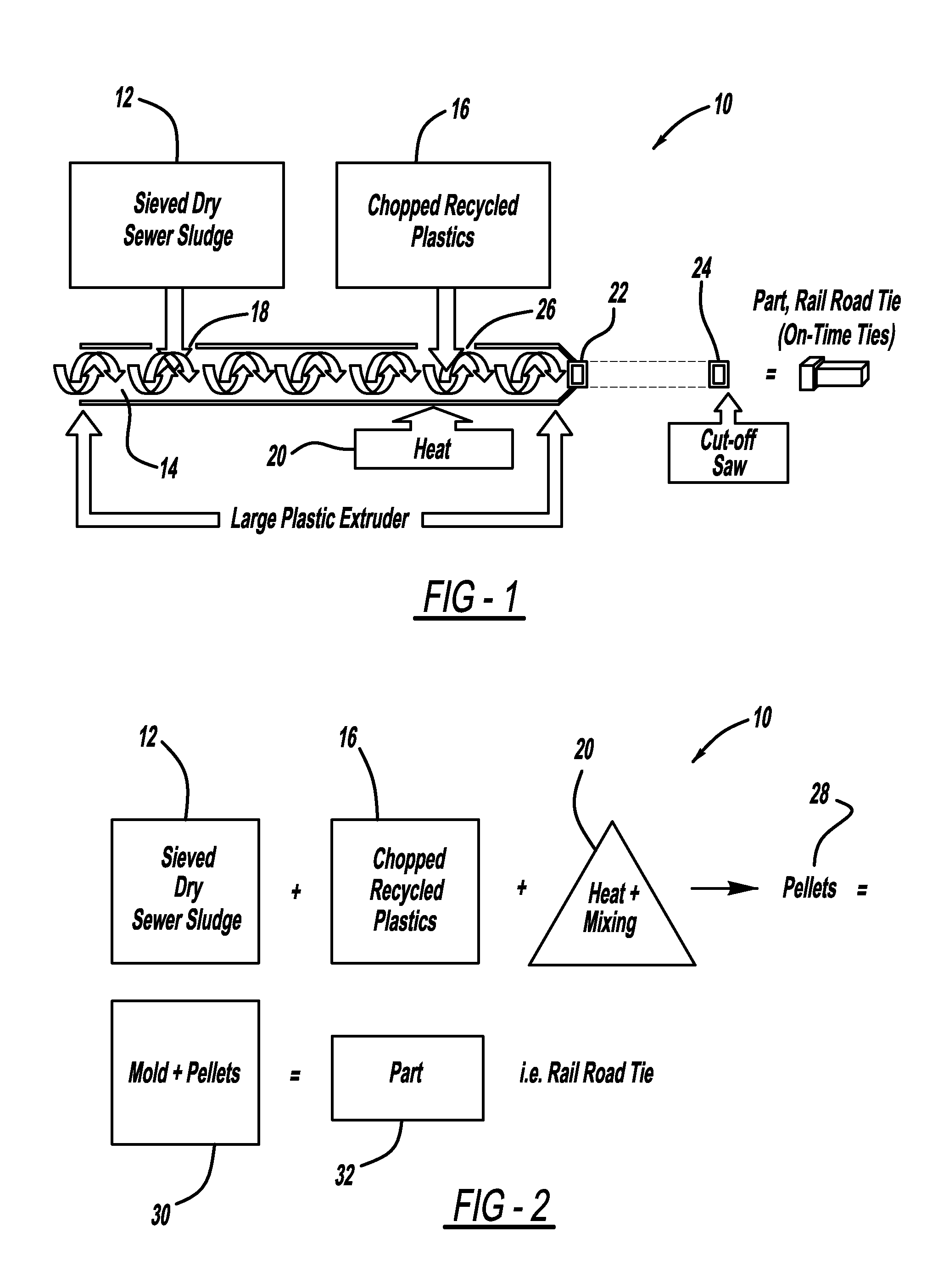Method of making structural members using waste and recycled plastics
- Summary
- Abstract
- Description
- Claims
- Application Information
AI Technical Summary
Benefits of technology
Problems solved by technology
Method used
Image
Examples
Embodiment Construction
[0039]The invention was a discovery resulting from some earlier work performed by the inventors in an effort to combine dry sewer sludge with cement in an attempt to fabricate patio blocks. This project was unsuccessful for the reason that the cement blocks were not curing properly. An extensive effort was made to review patented techniques disclosed in prior art patents to attempt to learn what their teachings provided regarding curing of cement. No clear answer was discovered by this extensive effort and the inventors could not understand how these patent owners could end up with a usable product from the teachings set forth. Therefore, after three months of devotion, the best that was obtained was a cement block which after 28 days of curing could be scraped with your fingernail and would result in flaking off the surface as if scraping a piece of chalk.
[0040]In the continued search for a solution to the curing problem of the cement and dried sewer sludge composite, the inventors...
PUM
| Property | Measurement | Unit |
|---|---|---|
| Percent by mass | aaaaa | aaaaa |
| Percent by mass | aaaaa | aaaaa |
| Angle | aaaaa | aaaaa |
Abstract
Description
Claims
Application Information
 Login to View More
Login to View More - R&D
- Intellectual Property
- Life Sciences
- Materials
- Tech Scout
- Unparalleled Data Quality
- Higher Quality Content
- 60% Fewer Hallucinations
Browse by: Latest US Patents, China's latest patents, Technical Efficacy Thesaurus, Application Domain, Technology Topic, Popular Technical Reports.
© 2025 PatSnap. All rights reserved.Legal|Privacy policy|Modern Slavery Act Transparency Statement|Sitemap|About US| Contact US: help@patsnap.com



